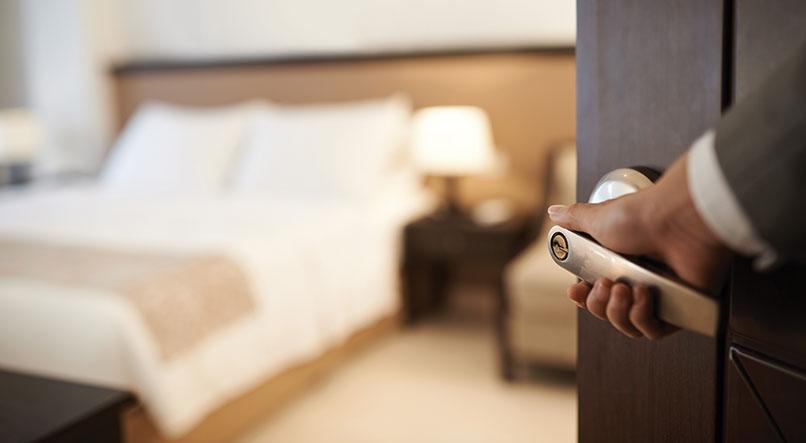
Make Cleaning Time More Productive

Maids and housekeepers – 480,000 of whom work in hotels – are a top 10 occupation in the U.S. for lost work time due to work-related injuries or illnesses, according to the Bureau of Labor Statistics (BLS). Recognizing this problem, cleaning equipment manufacturers are investing heavily in technologies to improve the experience of their end-users and reduce the cost of cleaning.
The Scope of the Problem
A BLS survey showed workers in traveler accommodations recorded 66,000 work related injuries and more than 4,700 occupational illnesses in 2010, which caused employees to miss 20,940 days of work. In California alone, work-related injuries and illnesses resulted in 200 lost workdays for every 10,000 hotel employees.
Every lost workday raises the specter of frustrated guests either waiting because their rooms aren't ready, or leaving during the day and returning to the hotel to find their room hasn't been cleaned. Both of which, can lead to poor reviews and cleanliness ratings. Moreover, the hospitality industry spends tens of thousands of dollars annually to continually hire and train new housekeeping employees to make up for lost work hours.
Innovation Improves Hotel ROI on Cleaning Equipment
Recognizing this major problem in the industry, hospitality leaders invited commercial cleaning equipment manufacturer Sanitaire into their facilities to study how their cleaning staffs use equipment.
After extensive research, Dalvin Green, product manager for Sanitaire, said his company identified the following problem areas and developed solutions to help address the issues that can lead to employee absenteeism.
• Minimize trips and falls
Vacuum cords are a common cause of staff trips and falls. The hazard can be minimized with cordless vacuums with extended-life batteries. Studies by the International Sanitary Supply Association (ISSA) found that by eliminating the need to plug in and move cords, cordless vacuums allowed crews to clean more space in less time.
• Improve air quality with allergen filtration
The cleaning process stirs allergens in an indoor environment, and cleaning crews are exposed to these enhanced levels of allergens as they clean. A vacuum with sealed HEPA filtration can trap 99.97 percent of captured dirt and allergens and improve air quality for both the cleaning staff and other building occupants. Consistently changing filters for optimal performance also contributes to maintaining a higher standard of air quality.
• Lower equipment weight to reduce strain
Product designs which incorporate lightweight metals like magnesium and new plastic compounds reduce or displace the weight of cleaning equipment without compromising durability. This makes the equipment easier to lift and operate, and has the potential to reduce lost workdays caused by musculoskeletal strain.
• Improve ergonomics of equipment with backpack vacuums
Ergonomically designed backpack vacuums and harnesses are built to help reduce strain on workers who clean floors, stairs, draperies and other above-the-floor surfaces. A 2014 study by ISSA shows they can also improve cleaning crew productivity by up to 30 percent.
• Increase day cleaning by reducing equipment noise
Regular day vacuuming may reduce the burden placed on overnight cleaning staff by reducing the amount of cleaning required after business hours. To keep disturbances at a minimum, vacuums certified by the Carpet and Rug Institute (CRI) for LEED qualified status must meet certain levels of noise reduction –making them ideal for day cleaning.
• Reduce equipment downtime and make maintenance easier
Design vacuums with features that allow cleaning staffs to maintain them faster so they can devote more time to cleaning. For example, replacing a brush roll used to require tools to unscrew and remove the vacuum hood. The more advanced vacuums on the market today allow a maid to replace a brush roll by simply opening a door, removing the old brushrool without tools and sliding in a replacement.
"We're looking at the components used in the vacuum to get more hours out of the vacuum," Green said. "We build them for specific uses. In hospitality, they want a quiet vacuum that's going to pick up well and maintain the dirt and the particulates in the vacuum, and it's easy to use."
To ensure proper product usage, and to increase awareness of features, most manufacturers make videos available to end-use customers to show their staff the proper way to assemble, operate and maintain their equipment. The visuals break through potential communication barriers by clearly demonstrating proper techniques. For further information on methods to reduce injury in cleaning staff, ISSA provides a number of helpful educational resources at www.issa.com/education.

Leave a comment